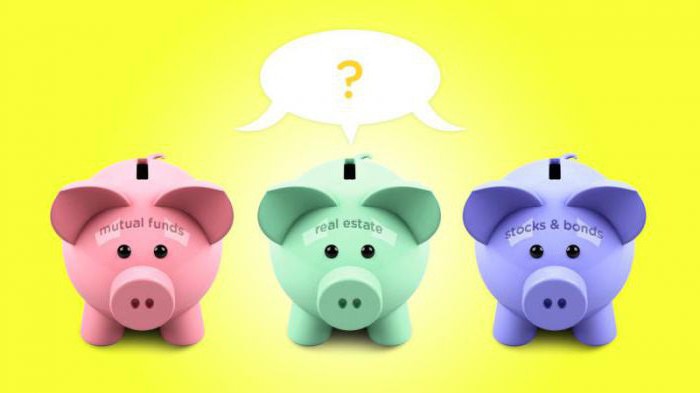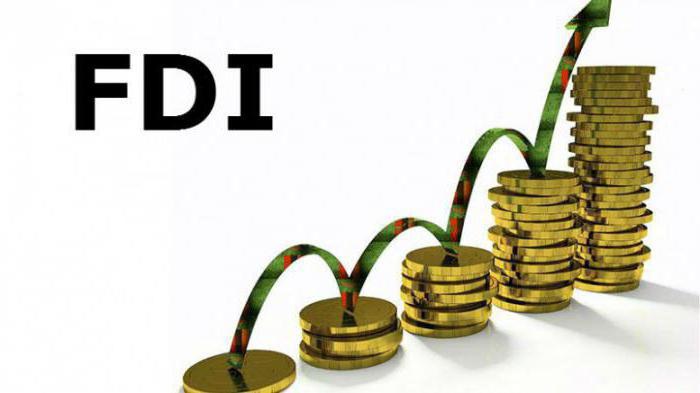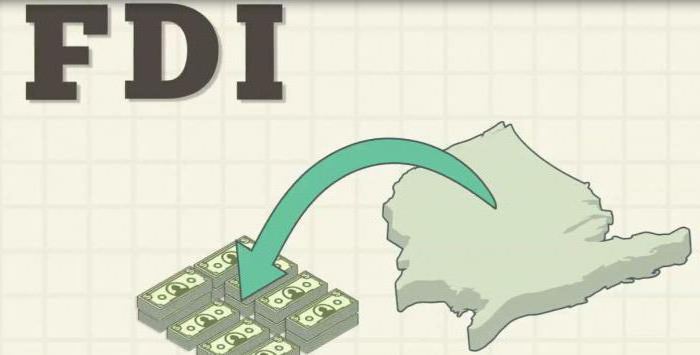An investment is any capital invested in objects of entrepreneurial and other types of activity, as a result of which income should be generated or the necessary effect should be achieved. Allocate legal forms of investment. They are used to raise capital and carry out this activity as a whole. It is customary to include organizational and comprehensive agreements, contracts between investors, as well as agreements on financing and on raising funds. The purpose of capital investment determines the form of investment.
Traditional forms of deposits
The main forms of investment depend on the interests and motives, as well as on the incentives of investors. Three forms are classically distinguished:
- Mercantile.
- Non-profit.
- Associates.

Mercantile investments mean the investor’s own funds, the purpose of which is not to achieve a social effect, but to receive as much profit as possible. Nonprofit ones are a certain antipode of mercantile investments, as a result of which a social effect should be achieved. Associated investments are made to achieve the strategic priorities of the investor.
Forms of existence
It is generally accepted to distinguish three forms of investment capital:
- Cash.
- Material.
- Property rights and other values.
Cash includes cash, targeted deposits with banks and securities. The tangible form of capital is movable and immovable property. The latter form is divided into several categories:
- Intellectual rights (copyright, patent, know-how, etc.).
- Rights to use natural resources (land, water, oil, gas, etc.).
- Other values.

There is another form of investment - financial rights. However, few distinguish it in economic literature. There are a number of signs according to which classification of investments is carried out.
Direct and indirect investments
Depending on the nature of participation in investing, investments are divided into two types: direct and indirect. Lines mean business operations, according to which funds or property are deposited in the authorized capital of a legal entity. In exchange for this, the investor receives corporate rights issued by a legal entity. Direct investments include those for which the authorized capital is in the range from ten to twenty-five percent. In addition, direct investment gives the investor the right to participate in the managerial processes that occur in the company.

Indirect investments, which are also called portfolio investments, include the acquisition of securities from financial intermediaries. Funds received by intermediaries should be invested in investment objects. Management of invested funds is also carried out by intermediaries, who subsequently distribute the profits between the clients, which are investors. The role of the investor in indirect investment consists only in generating income on securities, without taking part in the management of the enterprise, which has become the object of investment. Direct, indirect and capital investments together represent three forms of financial investment.
Real and financial investments
Based on the object of activity, investments are divided into real and financial. Real - this is the contribution of capital to real assets. Assets can be both tangible and intangible. Investing in intangible assets may also be called innovative.
Financial investment is an investment in financial assets.In most cases, securities are financial instruments.
Investment term
There are two forms of investment based on the funding period:
- Short term.
- Long term.
Short-term are committed for up to one year. These include short-term deposits and savings certificates.

Long-term investments for more than one year. Large companies divide them into four types:
- From one year to two years.
- Two to three fly
- Three to five years old.
- More than five years.
Very often medium-term financing is also singled out in the economic literature. It is designed for a period of 1-3 years.
Regional investment
Depending on the country in which the investment activity is carried out, the investment may be domestic or foreign. If the activity is carried out in the territory of the country of the investment object, then this form of investment is called internal. In the event that investment is carried out outside the territory of the country of the object, then investments are called foreign. Foreign includes the acquisition of financial instruments (shares of foreign enterprises, bonds of other countries, etc.).
Forms of foreign investment are defined in the same way as domestic. In other words, they can be direct and indirect, short-term and long-term, real and financial, etc.

Companies with foreign investment have the right to independently carry out their economic activities, determining the conditions for the sale of goods, work and services. The forms of investment are determined by law.
Ownership Investments
Investment activities can be performed by private individuals, the state, non-residents of the country. Private financing is provided by individuals, as well as legal entities that have private capital. State investment activity is carried out through local and state authorities. The source of funds is the budget and extrabudgetary funds.
In addition, there are general investments. They are carried out by the subjects of one country along with representatives of another state.
Forms of public investment
Investments made by the state are also divided into several types:
- Soft loans.
- Tax exemptions.
- Direct investment of capital from the state budget.
- Investments from a state-owned company.
The peculiarity is that their source is the budget; they are carried out on a refundable basis. The state exercises strict control over the use of invested funds.
Equivalent Annuity
When the investor is faced with the choice of an investment project, he is obliged to carefully examine all the benefits that he can get by choosing one or another alternative. In order to convert an investment that occurred at a certain moment (T) into several identical payments (n), an equivalent annuity is used.
Thus, it is possible to convert an uneven series of payments into a uniform one, the current value of which will be equal to the current value of the initial series. Equivalent annuity is also called average annuity. The factor used to calculate annuity is the inverse of the present value rental factor.

Decision-making criteria for evaluating investments using an equivalent annuity
When applying the annuity as a criterion for decision-making, such a feature acts that an investment with the highest annuity is selected. Nevertheless, it is also necessary to take into account that we can only compare investments with approximately the same volumes.
If the current value of a number of payments is positive, then using this method it is possible to calculate the amount that can be additionally withdrawn at the end of each period in order to obtain a current value of zero, i.e.even after such an additional withdrawal, the invested capital will be returned and the interest income at the level of calculation interest will be received.
After calculating the present value, it is multiplied by the annuity factor and thereby is converted to the same values for each period. An equivalent annuity can serve as a criterion for making decisions when comparing annual excesses, for example, from perennial and annual crops. To do this, first determine the current value of the excess from a long-term culture and then convert it into a "rent" (ie, equivalent annuity). And already the “rent”, in turn, can be compared with the annual excess of the annual culture. When applying this method, it is necessary to take into account the requirement that in both cases the excesses possible by comparison are determined, and not so that, for example, labor costs are taken into account in one case and not in the other.

Investment Sensitivity Analysis
The peculiarity of investments is that they are sensitive to changes in various data. To determine the impact of data changes on financing performance, a sensitivity analysis is performed.
This makes it possible to verify how changes in volatile (unreliable) data, such as income, prices and costs, affect the economic success of an investment. Such decisions, as a rule, serve to determine the probability of risk by which justified and critical areas of variation can be introduced. A more visual expression of receipts and payments for multi-period solutions is a good prerequisite for further sensitivity analysis. This is especially true if decisions were made in tabular programs, so that when changing individual data, the results are simultaneously corrected.
The results of the sensitivity analysis can be expressed graphically, as, for example, in the form of a “sensitivity rhombus”. For this, it is necessary to calculate current values at various calculation percentages for the following six payment series:
- The average value of income.
- The average value of payments.
- Revenues reduced by 10%.
- Payments increased by 10%.
- Revenues increased by 10%.
- Payments reduced by 10%.
The most unfavorable case is receipts of -10% and payments + 10%, while the most favorable combination arises when receipts increase by 10% and payments decrease by 10%.
If you present this in the form of a graph and project both points of intersection of the flow of capital on the X axis, you can establish the resulting internal interest rate increases. The calculation percentage, at which the lines of “average values” intersect, would lead to a zero current value of the investment. The calculation percentage at which these two curves intersect shows the internal percentage increase obtained by the investment under average conditions.